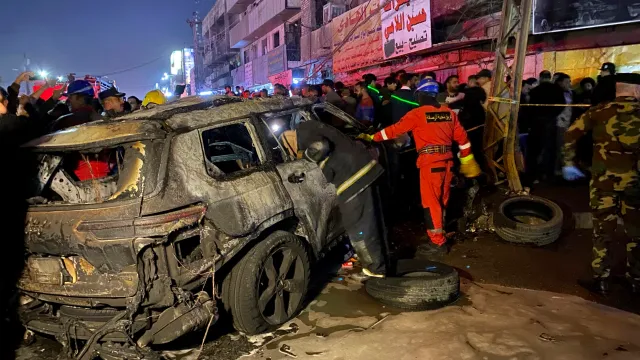
‘Houthi leaders are not immune from this type of targeted killing,’ says Ken Katzman
The assassination of a militia leader in Iraq this week showed the strength of US intelligence and could mark the start of a campaign of targeted killings, according to a former CIA official.
Wissam Mohammed al-Saadi, a commander of Kataib Hezbollah, an Iran-allied group implicated in the killing of three US soldiers in Jordan last month, was killed in Baghdad on Wednesday by a pinpoint drone strike that destroyed his car without causing any civilian casualties.
The White House has said that the response to the Jordan attack will be “multi-tiered” and is continuing. US forces also carried out air strikes in Iraq and Syria last Friday.
Dr Ken Katzman, a former CIA analyst with a focus on Iran and its allies, told i that “the US has signalled strong intent through a targeted killing as we have done with al-Qaeda and Isis… I think there was a message sent and we are going to see more”.
Dr Katzman, now at The Soufan Group think-tank, said the intelligence operation that preceded the strike would have been a major exercise.
Weapon CIA used to get al-Zawahiri. Kinetic Hellfire R9X. No warhead explosives, just blades that swing out to kill only one guy. pic.twitter.com/0dwkC40003
— Jay Hancock (@jayhancock1) August 2, 2022“It takes time to develop the intelligence on the exact movements [of the target] and to make sure they are in a place where they are not surrounded by civilians,” he said. “Getting the weaponry into place is an issue. It’s a task that is not easy.”
The US military is making use of a suite of intelligence capabilities, the analyst said, from satellite imagery to signal intelligence that tracks communications and human sources, potentially including the Iraqi government.
Washington has also developed new precision capabilities that enable strikes against targets in busy areas while minimising the risk of civilian casualties, such as the R9X Hellfire missile that uses blades instead of explosives, as was used in the killing of al-Qaeda leader Ayman al-Zawahiri in 2022.
Dr Katzman believes that these capabilities will make strikes against high-value militia leaders an attractive option as the US continues to wage two open-ended campaigns in the Middle East, one in response to the Jordan attack and another against the Houthis in alliance with the UK and other countries.
“The Houthi leaders are not immune from this type of targeted killing,” he said. “These guys in Iraq, Syria, and Yemen are going to face some real hardship if they continue [to attack the US]… they are going to face a determined and long term campaign.”
Militias in Iraq and Syria have carried out more than 150 strikes against US bases since the outbreak of the Israel-Hamas war on 7 October, although the Jordan attack was the first to kill US soldiers.
The Houthis have carried out dozens of attacks on commercial shipping over the same period, with all members of the Iran-led “Axis of Resistance” stating that they are acting in solidarity with Palestinians under fire in Gaza.
The Iraqi defence ministry said that US forces based in the country should leave after the assassination of al-Saadi.
“American forces conducted a blatant assassination through an air strike in the heart of a residential neighbourhood in the capital, Baghdad, showing no regard for civilian lives or international laws,” said spokesperson Yahya Resool.
“This compels the Iraqi government more than ever to terminate the mission of this coalition, which has become a factor for instability and threatens to entangle Iraq in the cycle of conflict.”
